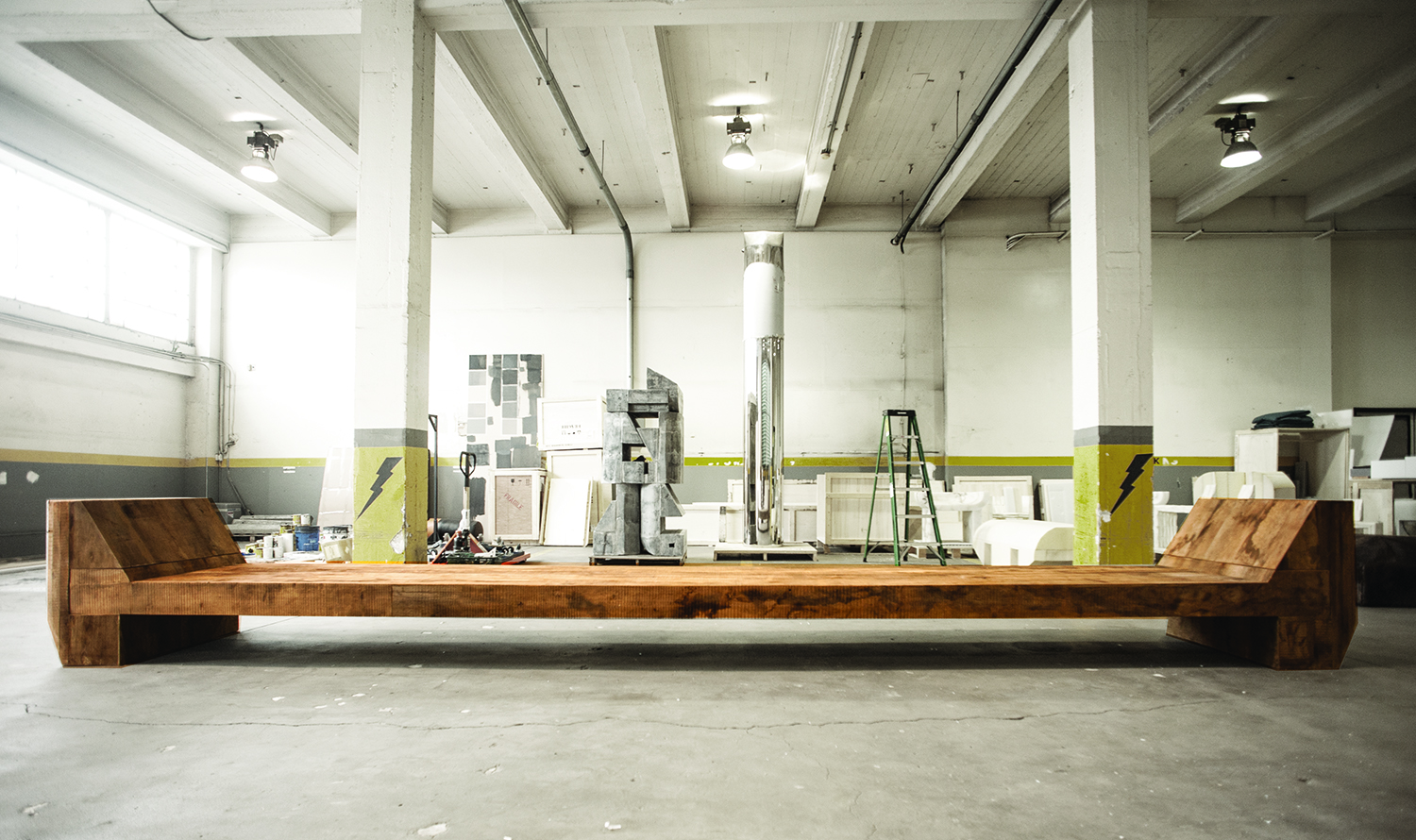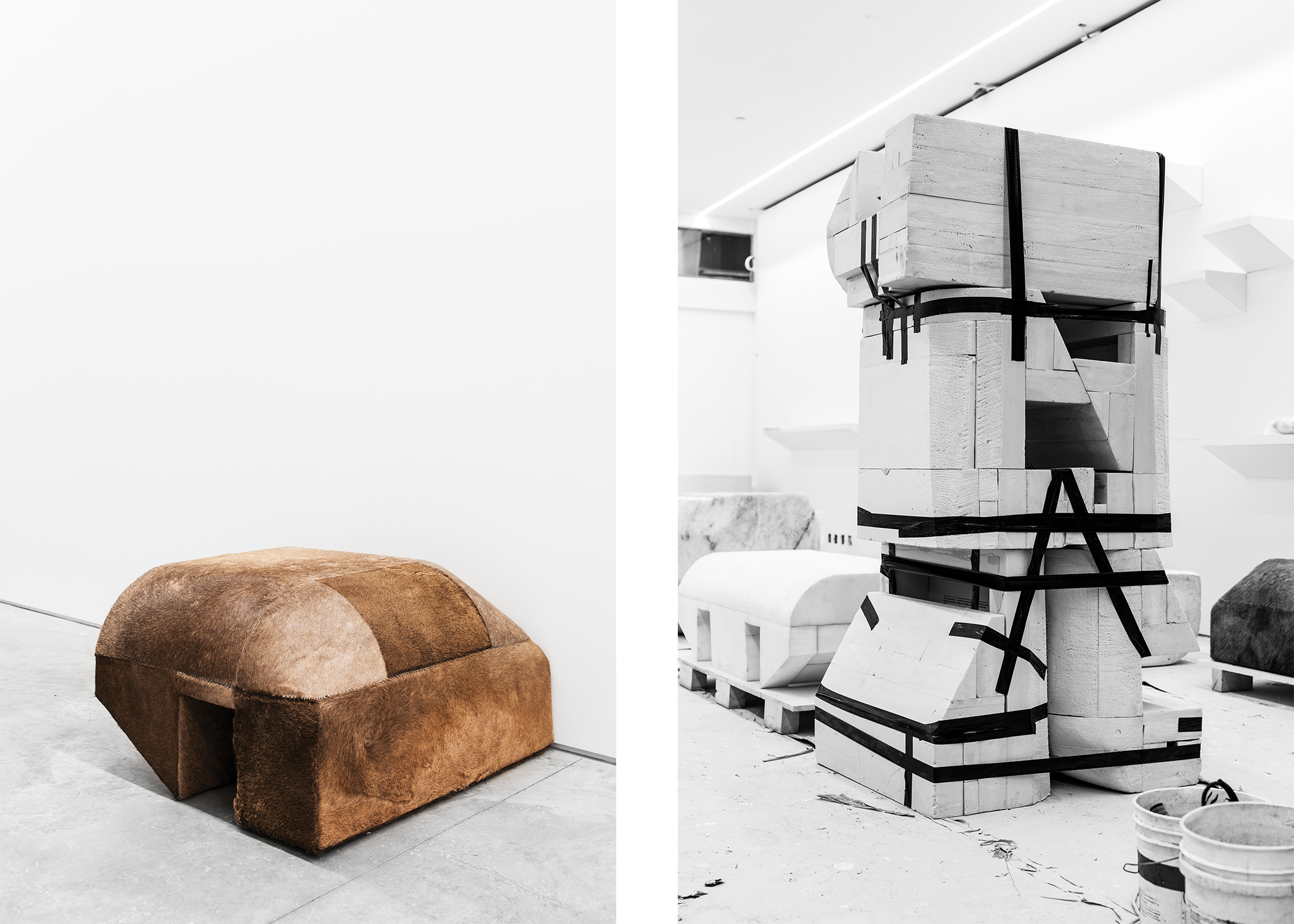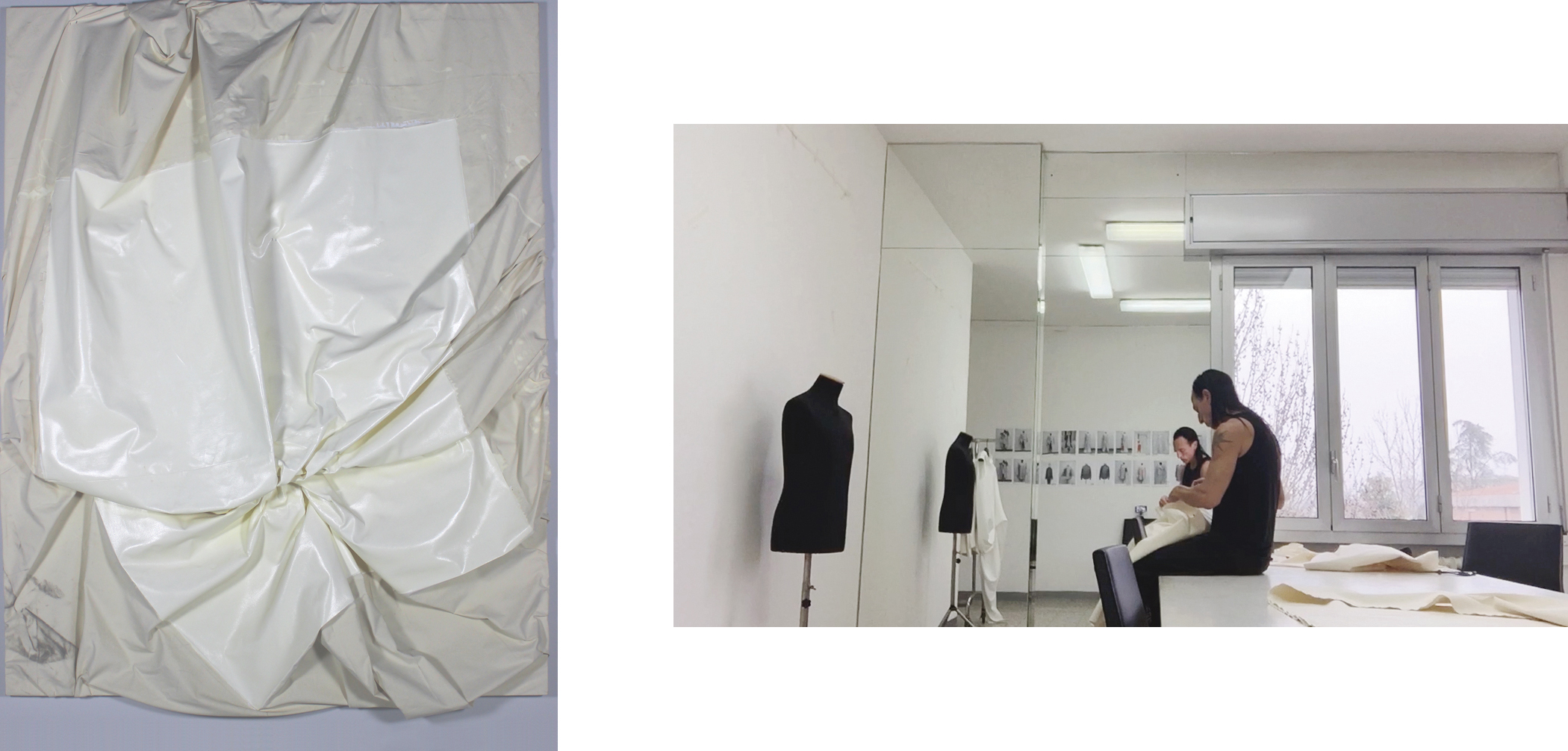| Essay title: | Foam Formalism | |
| Author: | Rebecca Matalon, Curatorial Assistant | |
| Exhibition: | Rick Owens: Furniture | |
| Month and year: | December 2016 |

Rick Owens: Furniture is the first US museum exhibition devoted to the furniture and sculpture of renowned Paris-based fashion and furniture designer Rick Owens (b. 1961, Porterville, California). Best known for the iconic, eponymous clothing label he founded in Los Angeles in 1994, Owens has consistently drawn inspiration for his fashion and furniture collections from a vast array of art historical sources that span Modernist design, Brutalist architecture, monochrome painting, Minimal art, and avant-garde dance. His spectacular runway shows function as a form of performance art and have referenced the work of designer, musician, and artist Leigh Bowery (1961–1994) as well as Stepping, a dance form associated with black fraternities and sororities in which the whole body is used as an instrument. By casting models of varying body types, Owens’s runway shows often challenge culturally constructed notions of beauty promoted by the very industry in which he works. Since 2007 Owens has applied a similarly radical sensibility to furniture, creating jagged and elegant forms made from marble, alabaster, bronze, ox bone, leather, and plywood. His earliest works—angular stools and chairs made of plywood and adorned with moose antlers or embellished with mink—juxtaposed the reduced geometries of Minimalism with the lavish, gothic decadence of late nineteenth-century France. This exhibition was organized in close collaboration with Michèle Lamy (b. 1944, Jura, France), Owens’s longtime partner and the primary creative force and producer of Owens’s furniture line. For this exhibition, Lamy worked with a variety of artisans and craftsmen to realize and execute the designs, establishing a temporary studio space in Los Angeles in November, 2016.
Owens’s recent furniture suggests a design sensibility inspired by the geometry, materials, and monochrome palette found in the work of artists associated with 1960s Minimalism. Working across media, these artists redefined ideas of artistic production, often through an extreme and reductive use of form. Using industrial, pre-fabricated, commercially available materials including plywood, metal, concrete, and Plexiglas to create geometric and serial forms, artists such as Donald Judd, Sol LeWitt, John McCracken, Robert Morris, and Anne Truitt, among others, challenged conventional notions of authorship, originality, and artistic labor. Owens’s furniture draws on this legacy and the varied styles and practices of artists associated with the movement. For example, Boudeuse (2011), a hulking, rectangular construction of black painted plywood and alabaster, pays homage to Judd’s Bed of 1979. So too does Owens’s black painted plywood Half Box Chair (2011) recall Judd’s similarly pared down Chair (1989) made of cherry wood. For this exhibition, Owens has created a new series of totems (2016) reminiscent of Truitt’s Twilight Fold (1971) or any number of her signature, banded acrylic on wood columns. Also included in this exhibition is a group of foam, concrete, and metal benches covered in camel skin, evoking John Chamberlain’s explorations with urethane foam from the 1960s.

Owens’s sensuous, erotically charged juxtaposition of forms and materials—namely between the cold, hard surfaces of alabaster or concrete and the lush softness of fur or foam—harnesses two parallel yet seemingly contradictory veins of Minimalism. Judd, LeWitt, and Morris remain pivotal and defining figures in the history of Minimalism, one aligned with rigid, geometric, if not hermetic objects. However, much writing from the period—both in the form of art criticism and artists’ writing—identifies a larger, more expansive constellation of practices operating under the umbrella of Minimalism. This alternative vein claims space for the tactile, the bodily, the organic, and the amorphous. Critic and curator Lucy Lippard was quick to pick up on the erotic and sensual aspects of works by Chamberlain, Eva Hesse, Yayoi Kusama, and Yvonne Rainer as well as their use of seemingly incongruous materials and forms. Notably, she found precedence for the new, “sensuous objects” of the 1960s in surrealism, including Meret Oppenheim’s historic fur tea set Object of 1936, which Owens’s new camel skin benches also playfully call to mind. Owens’s new, vibrant monolith-like structures and low benches summon this more expanded narrative of Minimal art, one that values idiosyncrasy and intimacy alongside the aggressive, cerebral toughness of geometric and architectural forms.
The sensuousness of Owens’s furniture and sculpture is mirrored in six monochrome paintings by the late artist, writer, and musician Steven Parrino (b. 1958, New York; d. 2005, New York), included in this exhibition. Owens and Lamy have a long standing interest in displaying their work alongside that of fellow artists, most recently presenting their furniture within an exhibition of work by the late Italian artist Carol Rama at the Musée d’art Moderne de la Ville de Paris in 2015. Inspired by the juxtapositions that emerged there, Owens and Lamy have positioned their work in dialogue with Parrino’s singular canvases.

Although he worked across drawing, painting, sculpture, video, and performance, Parrino is best known for his signature “misshaped” canvases and his particular process of un-stretching, folding, draping, tucking, and re-attaching canvas to its support. After painting the surface of stretched canvas—most often in a palette of black, white, or silver—Parrino would wrench the fabric from its stretcher bars, revealing previously hidden portions of raw canvas. Big Muff (1988), a silver-hued painting with almost labial folds of canvas—the title of which refers to the legendary “fuzzbox” of the same name, a special effect pedal for electric guitar, which in turn cheekily refers to female genitalia—is emphatically erotic. Distinctive, and immense in scale, Frankenstein’s Monster in the Arctic, (2001) sags below the bottom edge of the frame, as if the white monochrome, collapsing under its own weight, has slipped off the stretcher bars. The work is also notable in the way the canvas puckers and pulls just below the painting’s center, creating a belly button-like form or an orifice that is simultaneously anal, oral, and ocular. Orifices, often in the form of holes or cuts, are another consistent motif in Parrino’s work (as well as Owens’s), as is the inclusion of unpainted portions of canvas we find in Big Muff and Frankenstein’s Monster in the Arctic. Creased, crumpled, puckered, and drooping, Parrino’s artworks experiment with form and volume, while drawing on a history of twentieth-century art that blurs the line between painting and sculpture.
Parrino’s work has been influential for Owens and this becomes clear in a video installed on the first floor of the exhibition. In it we see the designer—alone in his studio in Concordia, Italy—create a piece for his Fall/Winter 2016 men’s runway collection titled Mastodon. Owens adorns a single mannequin in white cloth that he then rips, pins, pulls, and folds, creating a densely layered yet fluid garment. The forms found throughout Mastodon immediately recall Parrino’s sculptural paintings.
This exhibition provides the opportunity to tease out the formal and conceptual parallels in the work of Owens and Parrino. Extending from a subversive, anarchist sensibility, both artists place their respective mediums and histories under examination. Just as Owens’s fashion designs combine rigidity, tension, and organic shapes and materials to provide new architectures for the human body, his furniture unites Minimalism’s solid and sumptuous forms. These hybrid objects chart a libidinal, erotic, and willfully transgressive merging of art and design.